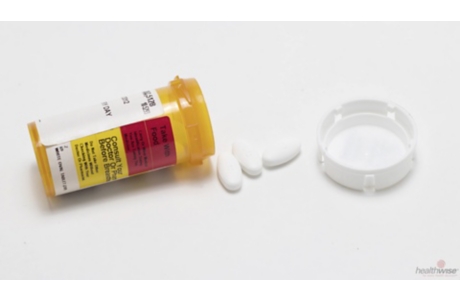opioid use disorder
overview
what is opioid use disorder?
opioid use disorder means that a person uses opioids even though it causes harm to themself or others. it can range from mild to severe. the more signs of it you have, the more severe it may be. moderate to severe opioid use disorder is sometimes called dependence or addiction. people who have it may find it hard to control their use.
this disorder can occur with the use of any type of opioid. prescription ones include hydromorphone, oxycodone, fentanyl, and morphine. heroin is an example of an illegal opioid.
opioids can be dangerous. taking too much can cause:
- trouble breathing.
- low blood pressure.
- a low heart rate.
- a coma.
- death.
many people with this disorder feel embarrassed or ashamed. their families may feel that way too. don't let these feelings stand in the way of getting treatment. remember that this disorder can happen to anyone who uses opioids, no matter what the reason.
what are the signs of opioid use disorder?
you may have opioid use disorder if two or more of the following are true. the more signs of this disorder you have, the more severe it may be.
- you use larger amounts of opioids than you ever meant to. or you've been using them for a longer time than you ever meant to.
- you can't cut down or control your use. or you constantly wish you could cut down.
- you spend a lot of time getting or using opioids or recovering from the effects.
- you have strong cravings for opioids.
- you can no longer do your main jobs at work, at school, or at home.
- you keep using, even though doing so hurts your relationships.
- you have stopped doing important activities because of your opioid use.
- you use opioids where or when doing so is dangerous.
- you keep using, even though you know it is causing health problems.
- you need more and more of the opioids to get the same effect. or you get less effect from the same amount over time. this is called tolerance.
- you have uncomfortable symptoms when you stop using opioids or use less (withdrawal). you take opioids to avoid or relieve withdrawal symptoms.
even if you take opioids as part of a supervised care plan, you can still develop opioid use disorder.
how is it treated?
treatment usually includes medicines, group therapy, one or more types of counselling, and drug education.
medicines may be used to help you quit. they may help to control cravings, ease withdrawal symptoms, and prevent relapse. this treatment is called opioid agonist treatment (oat). it is sometimes called medication-assisted treatment (mat). during oat, you take a medicine (usually methadone or buprenorphine) in place of the opioid you were using. most people take it for months or years as a part of the treatment, along with therapy or counselling.
treatment focuses on more than opioid use. it helps you cope with the feelings that often happen when people try to stop using opioids. these feelings may include anger, frustration, sadness, and disappointment.
treatment also looks at other parts of your life, like your relationships with friends and family. it looks at your school and work, medical problems, and living situation. treatment helps you find and manage problems. it helps you take control of your life so you don't have to depend on opioids.
a drug problem affects your whole family. family counselling often is part of treatment.
urgent treatment for an overdose
naloxone is a medicine that reverses the effects of an opioid overdose. if it is given soon enough, it may save a life. it comes in a kit you can carry with you. you can get naloxone without a prescription at most drugstores or through a community take home naloxone program.
credits
current as of: november 15, 2023
author: healthwise staff
clinical review board
all healthwise education is reviewed by a team that includes physicians, nurses, advanced practitioners, registered dieticians, and other healthcare professionals.
current as of: november 15, 2023
author: healthwise staff
clinical review board
all healthwise education is reviewed by a team that includes physicians, nurses, advanced practitioners, registered dieticians, and other healthcare professionals.



